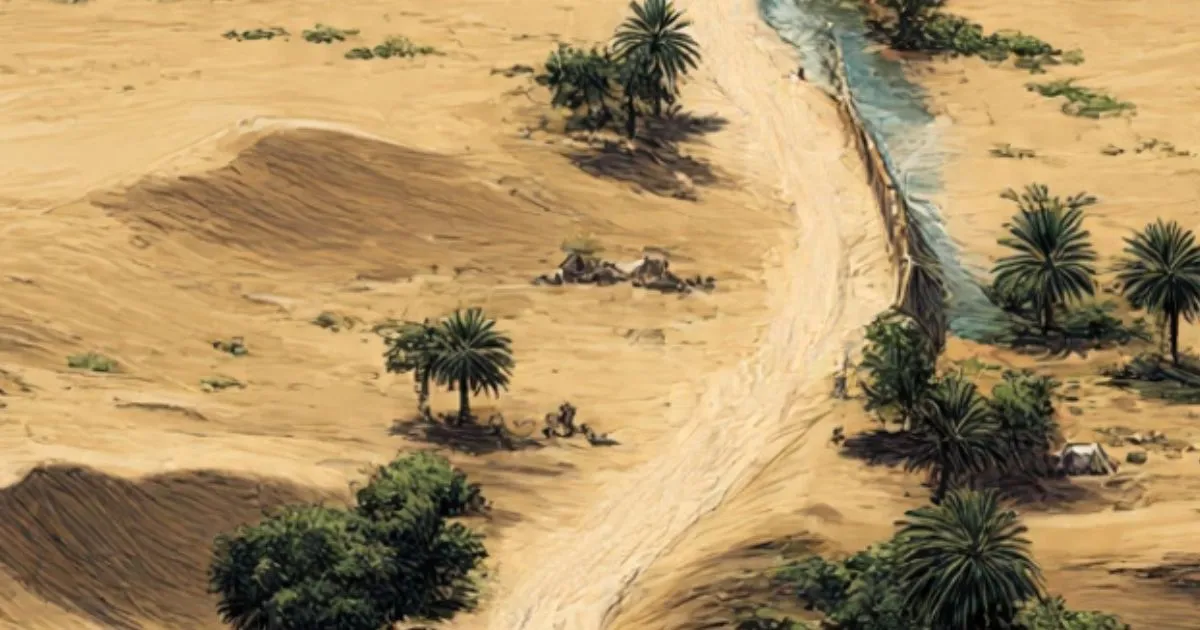Tracing the Prophet’s Route to Badr: A Journey Through History and Faith
Table of Contents
Tracing the Prophet’s Route to Badr: A Journey Through History and Faith
The Prophet’s Route to Badr is more than just a physical path between Mecca and Medina; it is a corridor of history, faith, and pivotal moments that shaped the future of Islam. This ancient caravan trail, often called the “Path of the Prophets,” witnessed the footsteps of prophets and the decisive march of the Muslim community to its first major military confrontation. Let’s journey along this sacred path and explore its key stations.
The Ruha Station: A Blessed Stop on the Prophet’s Route to Badr
One of the principal waystations on the Prophet’s Route to Badr is the area known as Al-Ruha. Located approximately 70 km from Medina, just beyond the region of ‘Iraq al-Dhubiya, Ruha holds profound historical and spiritual significance.
- A Path of Prophets: Tradition holds that an astonishing 70 prophets passed through this very area, earning it the name “Darb al-Anbiya” or the Path of the Prophets.
- Prophetic Hadith: The Prophet Muhammad (peace be upon him) mentioned Ruha in an authentic hadith, stating, “Indeed, Jesus son of Mary will descend at Ruha as a pilgrim or for Umrah, or to combine both” (Sahih Muslim). This prophecy imbues the location with eschatological importance.
- Connection to Badr: The Muslim army, led by the Prophet, passed through Ruha on their way to the Battle of Badr, cementing its place in Islamic military history.
Key Landmarks in Ruha
- The Well of Ruha (Bi’r Ruha): This ancient well is a tangible link to the past. It is reported that the Prophet drank from its water, and remarkably, the well still contains water today and is undergoing restoration to preserve this historic site.
- The Ruha Mosque (Masjid Ruha): It is believed that the Prophet prayed at this location. While the exact original structure may not stand, the site is marked and venerated.
- Nearby Natural Wonders: The region also features Wadi Sajsaj, a valley mentioned in some traditions (though with weak chains of narration) as being among the “valleys of Paradise.” The prominent Mount Hamat, also known as Mount Warqan, is also noted in similar traditions as a “mountain of Paradise.”
Al-Munsarif Village and the Mystery of Masjid Al-Ghazala
Continuing along the Prophet’s Route to Badr, the next significant stop is the village of Al-Munsarif, also known as Al-Musaijid. Here, the Prophet prayed in a mosque known as Masjid Al-Ghazala.
A unique aspect of this site is the dispute among historians over its exact location. There are two primary opinions:
- The mosque is located on one side of the modern road, near a specific mountain.
- The mosque is on the opposite side, where ruins with a clear prayer niche (mihrab) are visible.
This ambiguity reminds us that the Prophet’s primary concern was the act of worship itself, not building permanent structures, focusing instead on “building hearts,” as the narrator in the transcript wisely notes. For more on the history of the Battle of Badr.
Wadi Dhafiran: The Pivotal Council on the Prophet’s Route to Badr
Perhaps the most critical stop on the Prophet’s Route to Badr was Wadi Dhafiran, located just 30 km from the battlefield. This was not merely a resting place but the stage for a momentous event that tested the faith and resolve of the entire Muslim community.
The Crisis and the Consultation
Upon reaching Wadi Dhafiran, the Prophet received news that the strategic objective—intercepting Abu Sufyan’s trade caravan—had failed. The caravan had escaped, and a large, well-equipped Meccan army was now advancing with the intent to crush Medina. The Muslims, a small and poorly-equipped force, faced a dire decision: retreat or face an army three times their size.
It was here that the Prophet Muhammad, demonstrating exemplary leadership, held a shura (consultation) with his companions. He repeatedly asked, “Advise me, O people,” seeking their counsel and commitment.
The Unforgettable Pledges
The response from his companions defined the moment:
- Al-Miqdad ibn Amr spoke first, declaring the Muhajireun’s unwavering loyalty: “O Messenger of Allah! Proceed as Allah has commanded you. By Allah, we will not say to you what the Children of Israel said to Moses, ‘Go, you and your Lord, and fight; we will stay here.’ Rather, we say, ‘Go, you and your Lord, and fight; we will fight with you.'”
- Seeking the Ansar’s Commitment: The Prophet repeated his call, specifically wanting to hear from the Ansar (the Helpers of Medina), as their pledge of allegiance at Aqaba was primarily for defense within Medina.
- Sa’d ibn Mu’adh’s Historic Speech: Understanding the Prophet’s intent, Sa’d ibn Mu’adh, the leader of the Aws tribe, stood and delivered a speech that thrilled the Prophet. He said, “O Messenger of Allah! Proceed as God has blessed you… By Allah, if you were to lead us into this sea, we would plunge into it with you. Not a man among us would stay behind… We have believed in you and affirmed you. So go forth, and we are with you.”
This powerful pledge of unconditional support solidified the army’s resolve. The Prophet was filled with joy and said, “Proceed, and be of good cheer, for Allah has promised me one of the two parties (either victory or martyrdom).” He then pointed towards the future battlefield and said, “By Allah, it is as if I am seeing the enemy lying low.”
Landmarks in Wadi Dhafiran
- The Well of Dhafiran (Bi’r al-Firan): The ancient well that served the camp.
- The Dhafiran Cemetery: It is widely believed that the noble companion Ubaidah ibn al-Harith, one of the first martyrs of Badr, is buried here after succumbing to wounds sustained in a pre-battle duel.
Transportation to Battle of Badr Site
To get to the Battle of Badr site after Fajr prayer, you have options like taxi or ride-hailing services, private car services, group tours, or public transportation. Taxis and ride-hailing services like Uber or Careem are available 24/7, while private car services offer flexibility. Group tours can provide transportation and a guide. Public transportation might require a transfer in Yanbu. Plan ahead, confirm timings and prices, and carry cash and ID.
Tracing the Prophet’s Route to Badr is a powerful reminder of the journey of faith, from the blessed wells of Ruha to the decisive council of Wadi Dhafiran. It was along this path that faith was tested, loyalty was proven, and the course of Islamic history was forever changed. These stations are not just dots on a map; they are enduring symbols of sacrifice, trust in God, and the power of unwavering commitment. To learn more about the geography of the Hijaz region, you can explore Saudi Arabia’s official tourism website.

